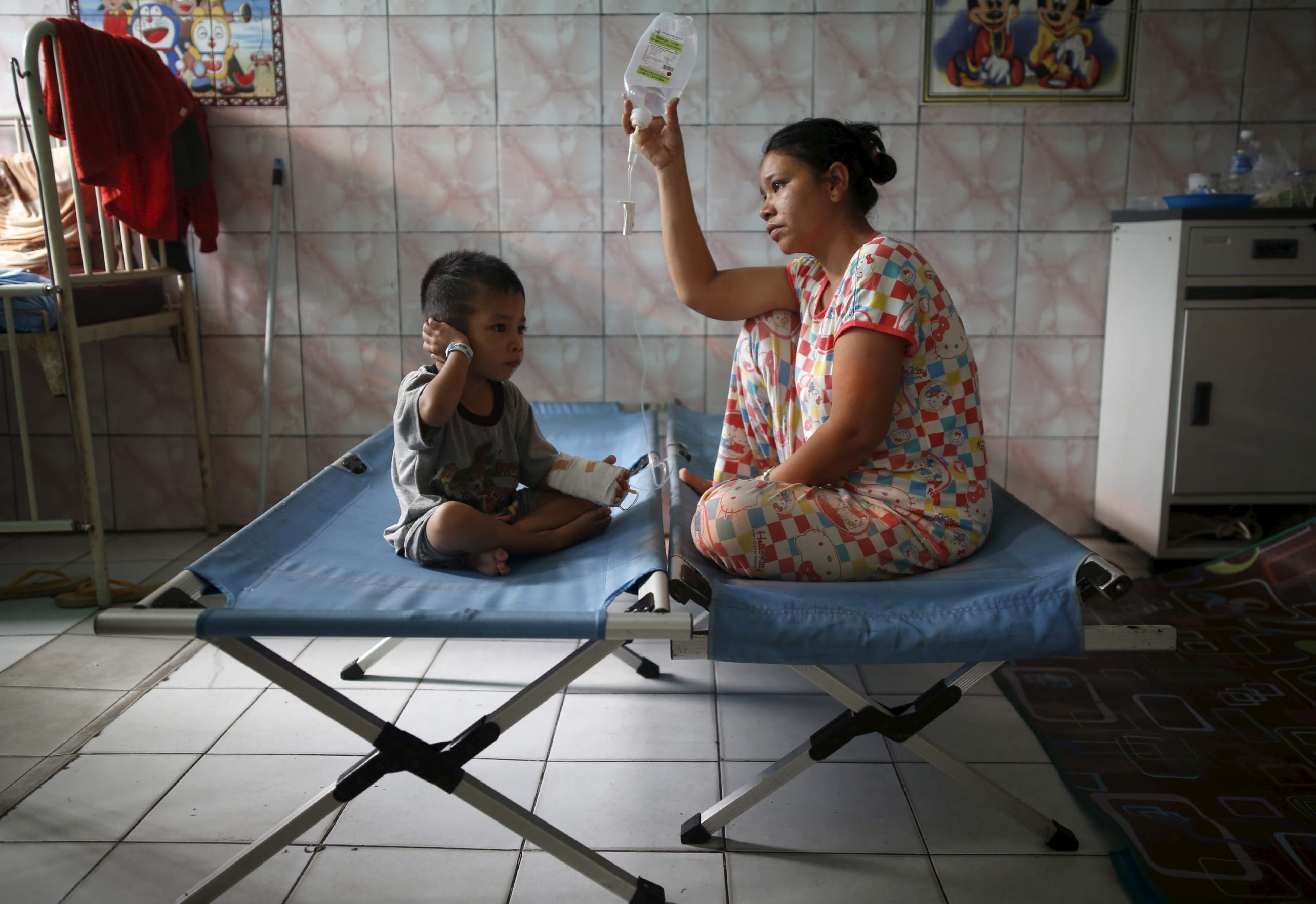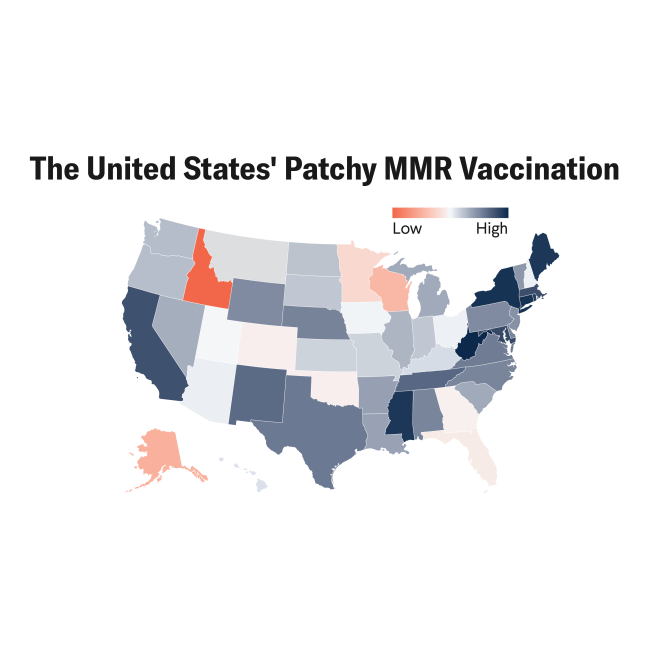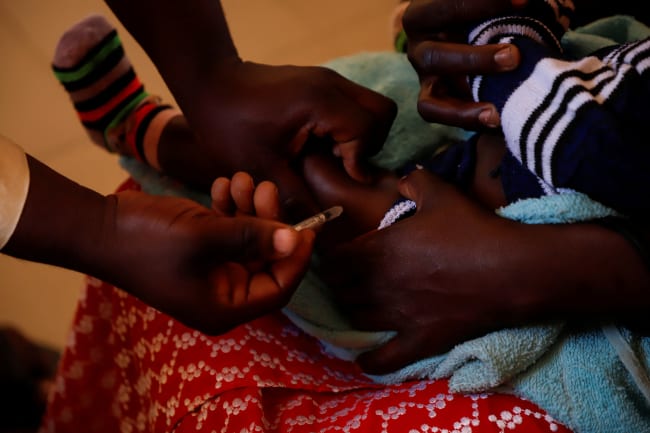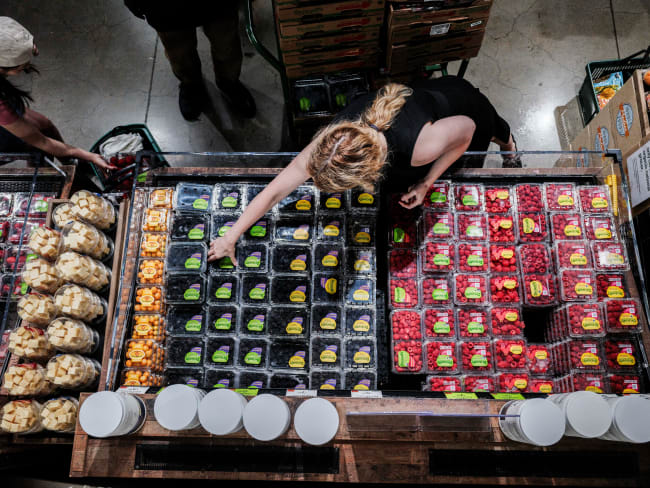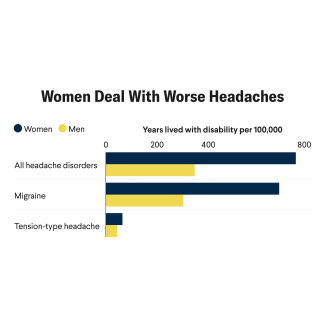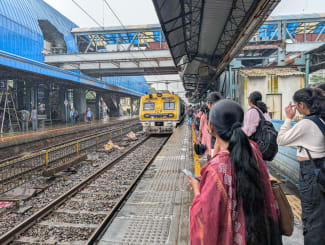As the 2024–25 respiratory syncytial virus (RSV) season nears, clinicians in the United States are working to prevent infections. But more than 7,000 miles away, at the Makerere University Lung Institute in Uganda, the story is different.
"Access to vaccines remains a big challenge, because they are quite expensive right now, and many low-income countries are not able to afford it," said Rebecca Nantanda, a pediatrician at the Kampala-based institute.
RSV is the most common cause of acute lower respiratory tract infections in young children, leading to an estimated 3.6 million hospital admissions annually across the world. One study found that the virus was the leading cause of infant hospitalizations in the United States from 2009 to 2019. Some 40% to 60% of children will be infected with RSV during their first year of life, and almost 90% will be exposed by age 2.
In 2023, to protect the country's youngest and most vulnerable, the United States approved and recommended the RSVpreF vaccine for pregnant women and the monoclonal antibody (mAb) nirsevimab for infants under the age of 2. Other high-income nations did the same. The vaccine reduces the odds of hospitalization during a newborn's early months of life by 57%; the efficacy of the antibody is 80%.
Low- or middle-income countries experience 97% of RSV-related deaths
During the 2023–24 respiratory disease season in the United States, 33% of eligible pregnant women received an RSV vaccine and 45% of infants received nirsevimab. Indeed, over the past two years, high-income nations have approved several RSV vaccines and nirsevimab, and even more drugs are in development.
"This is a huge development, and the opportunity to protect children from RSV is a huge opportunity," said Sarah Elizabeth Schaffer DeRoo, a pediatrician with Children's National Medical Center in Washington, DC. "This will transform the causes of hospitalization in infants."
Unlike the United States, Uganda ranks among low- or middle-income countries (LMICs)—the nations where 97% of RSV-related deaths occur. The majority of these deaths are in otherwise healthy children, meaning that equitable access to RSV prevention could save thousands of lives annually. Among LMIC nations, only China has approved nirsevimab; a handful of Latin American countries have approved RSVpreF.
This inequity has RSV experts calling for increased access to preventive interventions in LMICs.
"It almost physically hurts to see that we are implementing all these methods of preventing RSV, but only in the high-income countries," says Jonne Terstappen, a clinician-investigator at the Wilhelmina Children's Hospital who focuses on RSV vaccinations and mAbs for LMIC settings. "But that's not where the majority of deaths occur."
The Cost Barrier
One of the biggest barriers to therapeutic access is cost, particularly when it comes to nirsevimab, which has an estimated average price range of $445 in the United States, assuming that half the cost is covered by the federal entitlement program Vaccines for Children.
"The reality is that the pricing of nirsevimab, which ranges anywhere between $250 and $520, is completely out of reach for almost all low- and middle-income countries," said Shabir Madhi, head of the Wits Vaccines and Infectious Diseases Analytics Research Unit (Wits VIDA), which led the South African arm of clinical trials for RSVpreF.
According to Madhi, for nirsevimab to be cost effective in South Africa, it would need to be priced between $30 and $40.
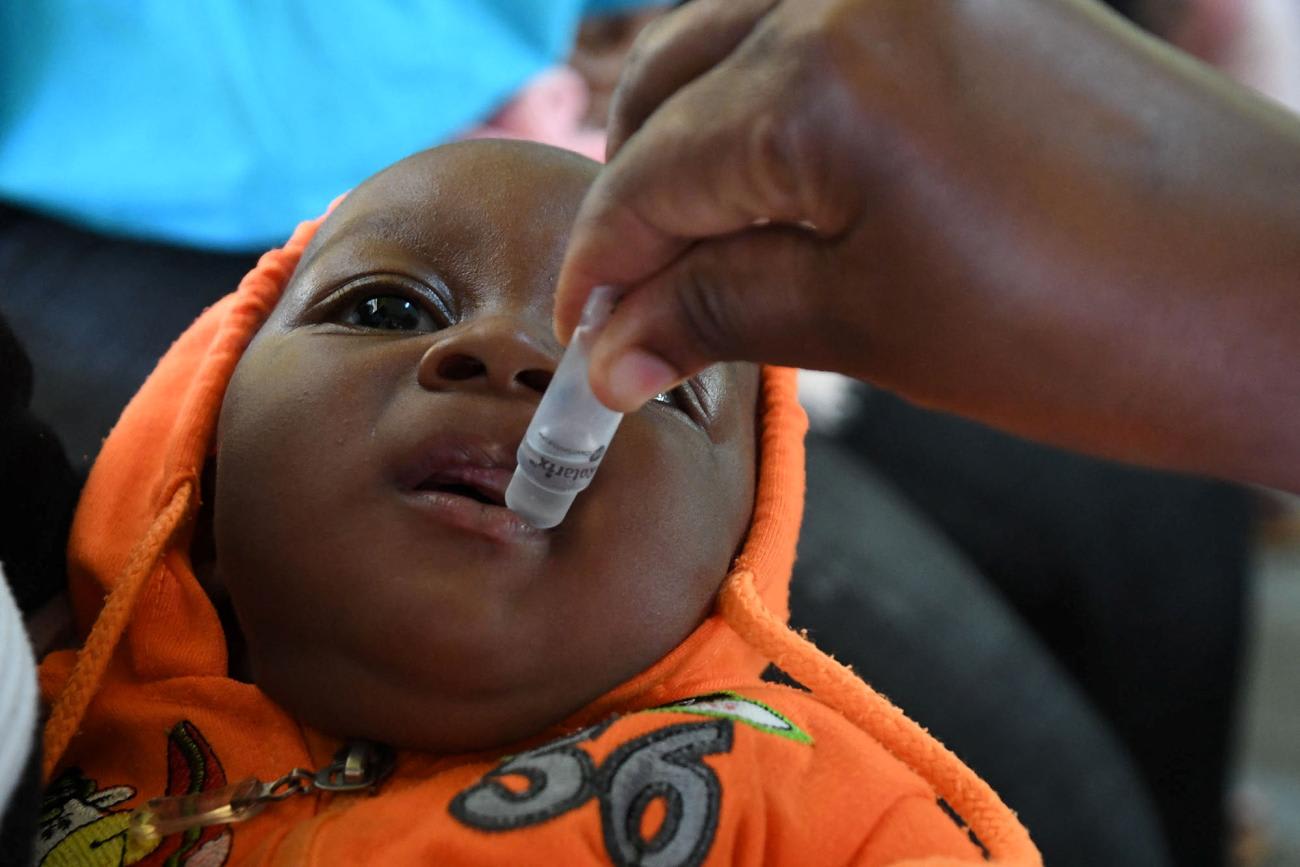
Typically, the more a product is used, the more its price decreases. According to Daniel Feikin, an epidemiologist at the World Health Organization (WHO), so-called economies of scale, however, do not apply as strongly to mAbs because of their high production costs.
Rather than expecting LMICs to wait for the cost of nirsevimab to come down, manufacturers could implement a tiered pricing strategy. Doing so would market the product at a lower price in LMICs by offsetting the losses through increased pricing in high-income countries. Another approach would be to encourage the entry of competitors into the market. Although none have yet been licensed, other RSV mAbs are currently in development.
"If those products are authorized and start to be used within the next few years, then there'll be competition. Prices will likely come down," Feikin said.
Philanthropic organizations can also help offset the cost of public health interventions. LMICs often rely on entities—including the Gavi, the Vaccine Alliance—to procure vaccines at reduced prices. Madhi notes, however, that nirsevimab may be beyond Gavi's budget, given that the organization typically can afford to pay only around $5 per dose for an intervention.
Moreover, acquiring disease-preventive interventions through Gavi requires manufacturers to go through WHO's prequalification process, a program that ensures the efficacy of essential global health products. Manufacturers must submit dossiers for prequalification of their products, a step that hinges on their willingness to engage with LMIC buyers.
For a vaccine or antibody to be successfully integrated into LMICs, it should align with existing public health infrastructure
"They might not be interested in [LMIC] markets that would care about WHO prequalification," Feikin explains. One emerging option is RSM01, an mAb being developed by the Medical Research Institute, a subsidiary of the Bill & Melinda Gates Foundation. A recent Phase 1 trial of RSM01 showed equivalent or even greater efficacy than nirsevimab.
Given the current landscape, scaling up the production of Pfizer's RSVpreF and bolstering maternal vaccination campaigns is the most likely option. As a vaccine, RSVpreF is inherently cheaper than nirsevimab, a monoclonal antibody. Additionally, as a part of Pfizer's Accord for a Healthier World initiative, the company has already committed to a tiered pricing strategy for RSVpreF. Anand Krishnan, a professor at the All India Institute of Medical Sciences, has conducted research indicating the feasibility of introducing the maternal vaccine in India.
"We expect about a 4% to 5% increase in the budgetary allocation for vaccines. Which, in the Indian context, seems realistic," he says.
Supporting Public Health in LMICs
RSV experts caution that relying solely on RSVpreF cannot be the only solution because it does not address the broader issue of how public health advancements are often developed and implemented without considering LMICs.
For a vaccine or antibody to be successfully integrated into LMICs, it should align with existing public health infrastructure and be accepted by the target population. Achieving this requires vaccine manufacturers to invest in partnerships with stakeholders in LMICs, who often have invaluable insight into the practicality of an intervention. Krishnan notes that, in his research, Indian mothers expressed concern about the number of injections their infants received.
To minimize discomfort, they preferred to receive the RSV vaccine themselves rather than giving their infants nirsevimab. Although introducing a monoclonal antibody would be new to India's public health strategy, the country already has a maternal vaccination program, making the addition of another vaccine manageable. Madhi also highlighted that although seasonal interventions such as nirsevimab are feasible in high-income countries, where routine pediatric visits are common, they are not in many LMICs.
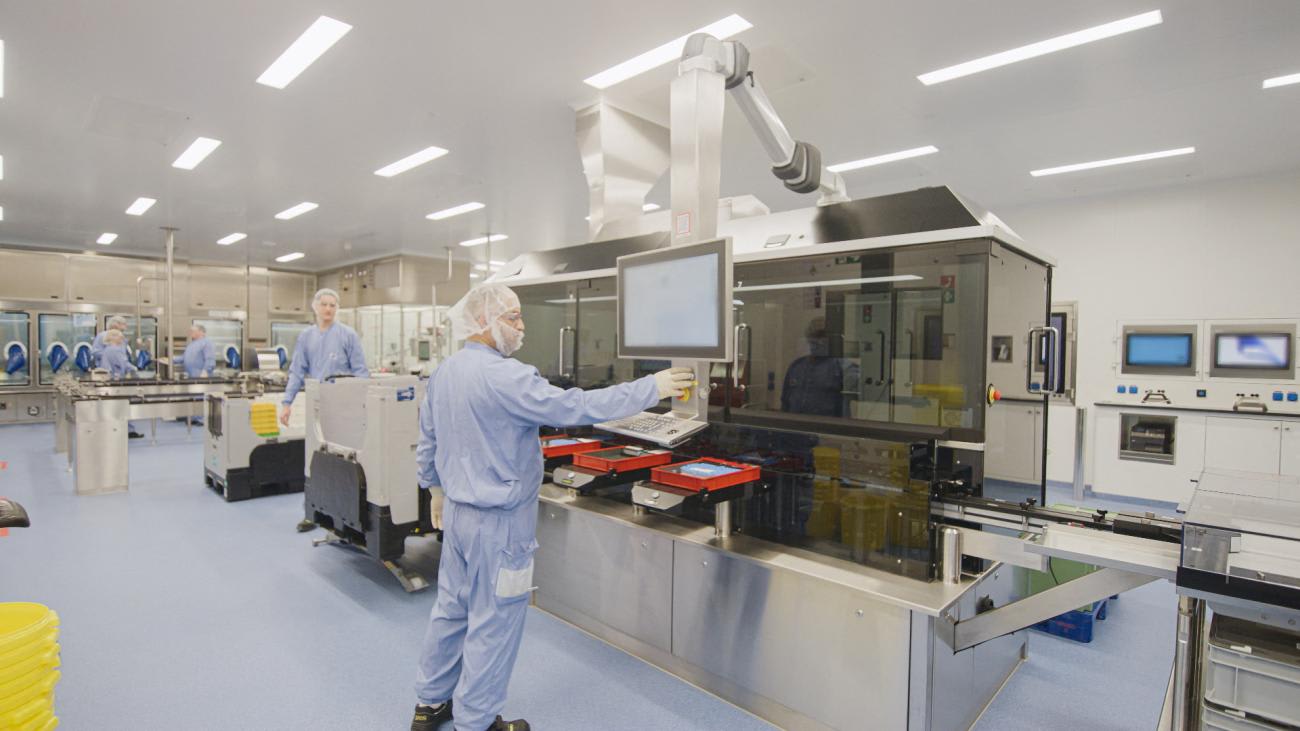
Developers also need to demonstrate the efficacy of RSV-preventive interventions to LMIC governments to encourage their adoption. Clinical trials for vaccines are often conducted in high-income countries, and, without comparable data from LMICs, it is not always clear whether the efficacy of an intervention will translate to LMIC settings. Madhi notes that the successful introduction of pneumococcal and rotavirus vaccines in South Africa was largely due to the availability of in-country data demonstrating their utility.
"We were able to take the body of evidence that we generated and engage with the government. They understood the benefits of doing so, and they made the funds available," says Madhi. "So it's always really useful to have local evidence."
Encouraging pharmaceutical companies to engage with and conduct research alongside LMICs is only one part of the equation. Supporting the development of respiratory surveillance systems is also critical. These systems demonstrate the need for vaccines by documenting prevaccination disease levels and assessing vaccine efficacy by recording the postvaccination burden. The data collected from these surveillance campaigns can persuade governments of the necessity for health interventions. Krishnan even regards the expansion of respiratory surveillance as the "most important policy decision to be made" in India.
Encouraging Self-Sufficiency, Collaboration, and Awareness
Addressing the complex issue of RSV requires discussions among various stakeholders committed to eradicating the virus. To raise awareness and foster dialogue, Louis Bont, a pediatric infectious disease physician and researcher at Wilhelmina Children's Hospital in the Netherlands, collaborated with the WHO to create the RSV Roadshow Web Series. This initiative produces monthly educational content on RSV burden and mortality, preventive interventions, health policy, and patient stories, aiming to elevate the virus's profile and convey the urgency of a collaborative approach to reducing global morbidity and mortality.
"You can actually see in front of your eyes that bringing people from different backgrounds together, including the pharmaceutical industry, helps. And so this is one of the most rewarding things I've ever done," he says.
To ensure immediate change, researchers such as Madhi stress the importance of pressuring pharmaceutical companies to implement tiered pricing that makes vaccines affordable for all LMICs. Such grassroots advocacy, he notes, eventually enabled widespread access to antiretrovirals during the HIV crisis.
"Civil society, patients, and health-care workers need to become more vocal about the need for these interventions to be deployed in settings where it's most required," he says.
Public support is important, but ultimately Madhi points the finger back at LMIC governments that have thus far failed to adequately increase investment in their countries' health-care systems. Every $1 dollar invested in immunizing a child generates a return of more than $50, a benefit that not all LMIC governments prioritize. Although philanthropic organizations such as Gavi play a crucial role in promoting health in LMICs, they wind up enabling governments to shirk their public health responsibilities, further necessitating their existence, something Madhi likens to a "vicious cycle."
"We have to start moving away from a complete dependency on external support for the introduction of these life-saving interventions into immunization programs," he says.
Madhi expressed the importance of developing vaccine manufacturing capabilities in LMICs. However, he is concerned that vaccine manufacturers in Africa would not be able to keep up with U.S. or Asian competitors, such as the Serum Institute of India, which are "way ahead in the game." To support their sustainability, he posits that organizations including Gavi could establish contracts with African developers and purchase their vaccines or monoclonal antibodies at prices higher than those offered to external competitors.
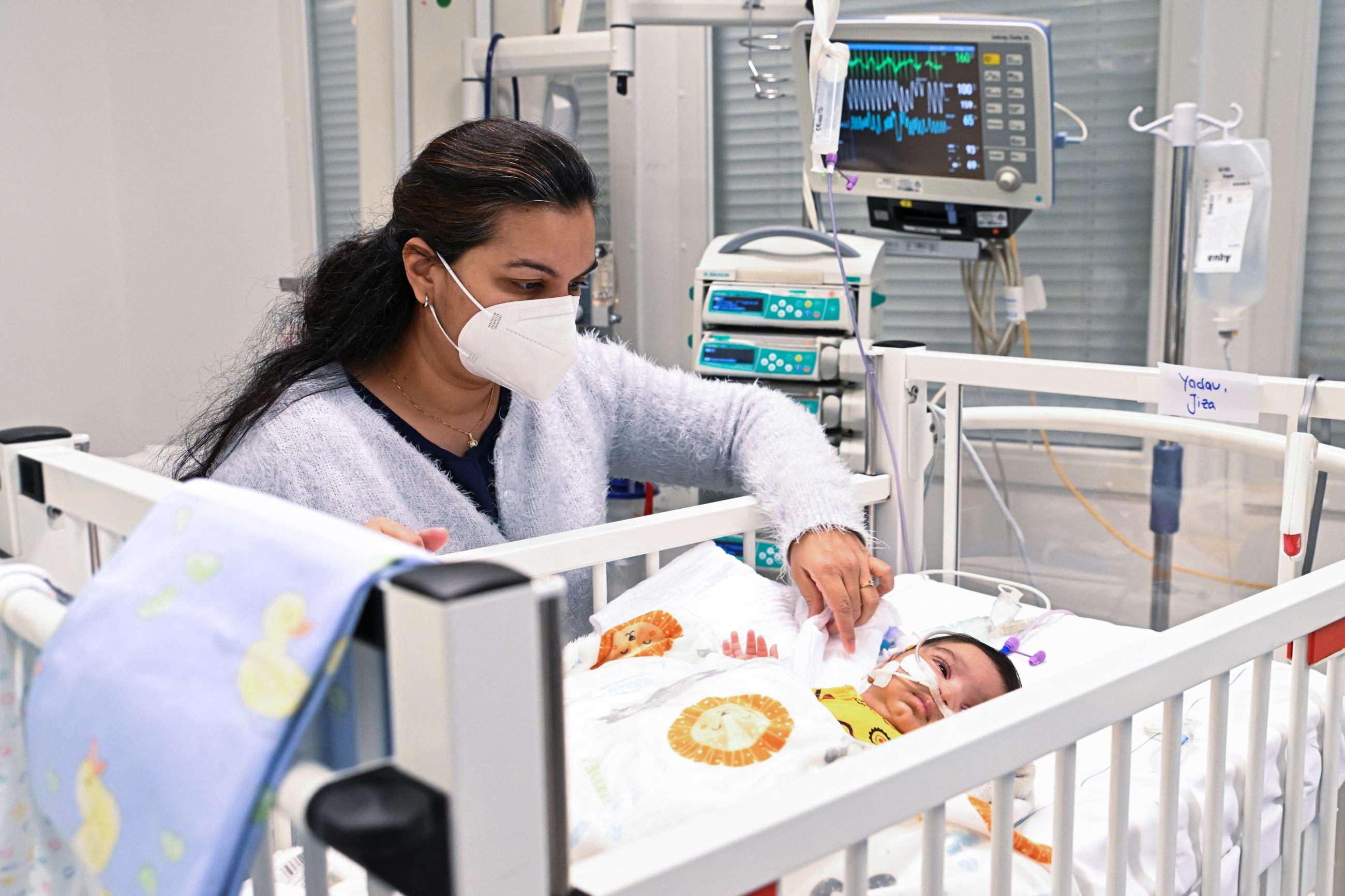
EDITOR'S NOTE: The article was updated on December 12, 2024, to remove a quote from a source who wishes to remain anonymous.
